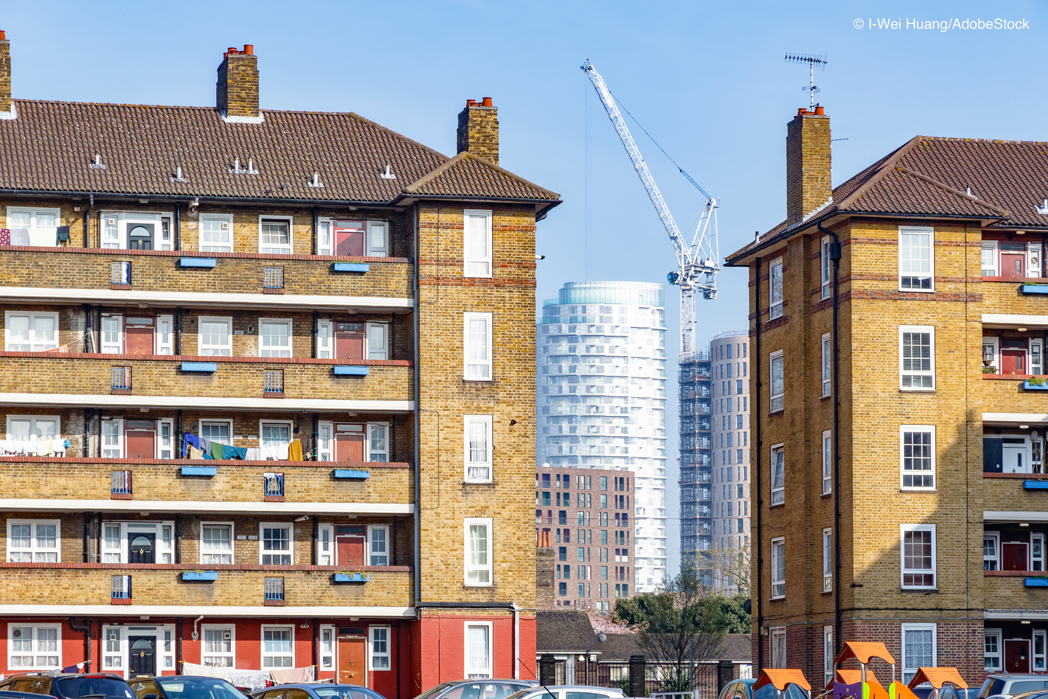
Sector welcomes the release of the long-awaited Social Housing Green Paper, but do the proposed changes go far enough?
Stonewater
Nicholas Harris, Chief Executive, Stonewater said: “We welcome measures to improve tenant satisfaction and empowerment, especially measures to tackle the stigma sometimes associated with living in social housing. We always strive to do better for our customers and look forward to meeting these new challenges. Improved safety standards too are welcome if we are to avoid a tragedy like Grenfell from ever happening again, as are measures to improve access to low-cost home ownership.
“We welcome too the idea of providing funding certainty over longer periods, but urge the Government to give this certainty to all housing associations to ensure we all have the certainty we need to build new affordable homes and plan for the longer term. While we welcome the emphasis on building new homes, it is regrettable that there is little new in the Green Paper on grant or funding programmes that would allow housing associations to deliver more homes each year and help the Government achieve its ambitions.”
Trowers & Hamlins LLP
“The publication of the Social Housing Green Paper presents an important opportunity to shine a spotlight on the role of social housing today, who it supports, who provides it and how” said Tonia Secker, Partner at Trowers & Hamlins LLP. Residents need to know that their homes are decent and safe and “be placed at the heart of decisions surrounding their homes.”
Tonia added: “The call for evidence on the Regulator’s role is timely and can resolve existing tensions between its actual powers, the perception of those powers and the role of the Housing Ombudsman — as well as the difference in its enforcement powers as between registered providers and councils. Renewed consideration of the Regulator’s consumer-facing powers is necessary, but it will be important to ensure that the emphasis on sound economic regulation is not lost in the debate.”
Trowers & Hamlins believes the Green Paper is right to focus on the relationship between residents and housing providers, however, “it is a difficult and complicated area” added Tonia. “Some ‘yardstick’ of quality is necessary, but whether a ‘league table’ approach is the right one remains to be seen — particularly in circumstances where an individual’s choice of landlord is constrained. The additional resource and infrastructure required to implement such a system risks both cutting across the role of the Regulator and muddying the waters. What is needed is more clarity and unification of function rather than less.”
The relationships between residents and housing providers and how tenants can make the transition into home ownership “is a sensitive and complicated area,“ said Tonia. “How can a right to buy — in whatever guise — not deplete the national social housing stock at a time when the need for it is acute? What is the incentive for councils and housing associations to build knowing that the stock may be lost?”
Many in the sector have criticised the absence of new funding announcements to increase the supply of genuinely affordable homes by councils in the Green Paper, as well as the Government’s intractable stance on the local authority HRA debt cap. On this Tonia feels it’s important not to: “forget that £2bn of funding for affordable housing and social rent was announced at the end of last year taking the total provision up to £9bn.
“Councils are also currently bidding for an additional £1bn of HRA headroom, which we understand will be heavily oversubscribed” Tonia continued “and the Green Paper indicates that this programme will be used by government to measure the appetite of councils to build new homes. It will be disappointing for many councils that the HRA debt cap has not been lifted but they will be hoping that an oversubscribed bidding round will lead to further opportunities. Let’s see. Councils will nonetheless be pleased that Higher Value Void levy has now been abandoned and should provide additional confidence to invest in new homes.”
Prosperity Capital Partners
Ed Fowkes, Development Director at Prosperity Capital Partners, said: “The Social Housing Green Paper is a welcome declaration of support for tenants and of the empowerment of local communities. As the Government sets out plans to deliver affordable housing targets, local authorities should use this renewed flexibility to find smart ways of delivering quality social homes, improving the image of the sector and helping to address housing shortfall in key locations. Tenants deserve decent homes to live in, and we hope that this year’s Social Housing Green Paper will strengthen the voice of the vulnerable, and solve many of the supply side problems that have stunted social housing delivery throughout Britain.”
ilke Homes
“The Government report is a welcome step towards levelling the playing field between social tenants and landlords. The details included in the report show that the Government is committed to ramping up efforts to remove the stigma attached to social housing,” commented Björn Conway, Chief Executive of ilke Homes. “However, if we want to create the thriving communities detailed in the report, we first need to tackle the wider issue at hand of delivering a pipeline of housing availability to those that need it most.”
In this regard ilke Homes thinks councils need more support to develop new housing. Björn said: “While this report is making inroads by granting new borrowing capacity to local authorities to be able to borrow to build homes, it is just a start. We need a firm commitment by the Government to support local authorities across the country to help build these new homes.”
Offsite and modular technology has an important role to play. Bjorn commented: “This is where innovative technology can play a part, implemented through modern methods of construction. Modular homes built in factories and delivered to sites across the UK can be fitted in a single day, with up to six properties installed per day. This means the timeframe from installation of the homes to families moving in can take just two weeks, providing a reliable and predictable timeline for local authorities, housing associations and developers to work towards. Offsite construction is gaining momentum as one of the only viable solutions to overcome the challenges the industry is facing and solve the housing shortage.”
National Federation of Builders
The National Federation of Builders (NFB) has welcomed the Social Housing Green Paper’s approach to solving existing social housing problems but warns that proposed changes do not go far enough. The proposed changes to the definition of social housing now include shared ownership and equity percentage arrangements. The NFB is concerned ‘this change may not actually deliver new homes where they are most needed’, despite the fact that ‘the number of social housing a local authority sees built, will likely increase’.
The NFB believes that ‘with a limited number of local authorities seeing their borrowing cap raised, the Government needs to be bolder in giving councils the power to build their own homes’.
Richard Beresford, Chief Executive of the NFB, said: “The Social Housing Green Paper proposes solutions to existing problems but stops short of radical reform. Not lifting the local authority borrowing cap will undoubtedly be seen as a missed opportunity.
“The Government accepts that social tenants want to own their own home and therefore changes to right to buy and the definition of social housing are welcomed. However, previous commitments to replace council housing at a rate of ‘one for one’ are not referenced, therefore public housing stock may continue to be depleted at a rate faster than councils can afford to replenish it.”








